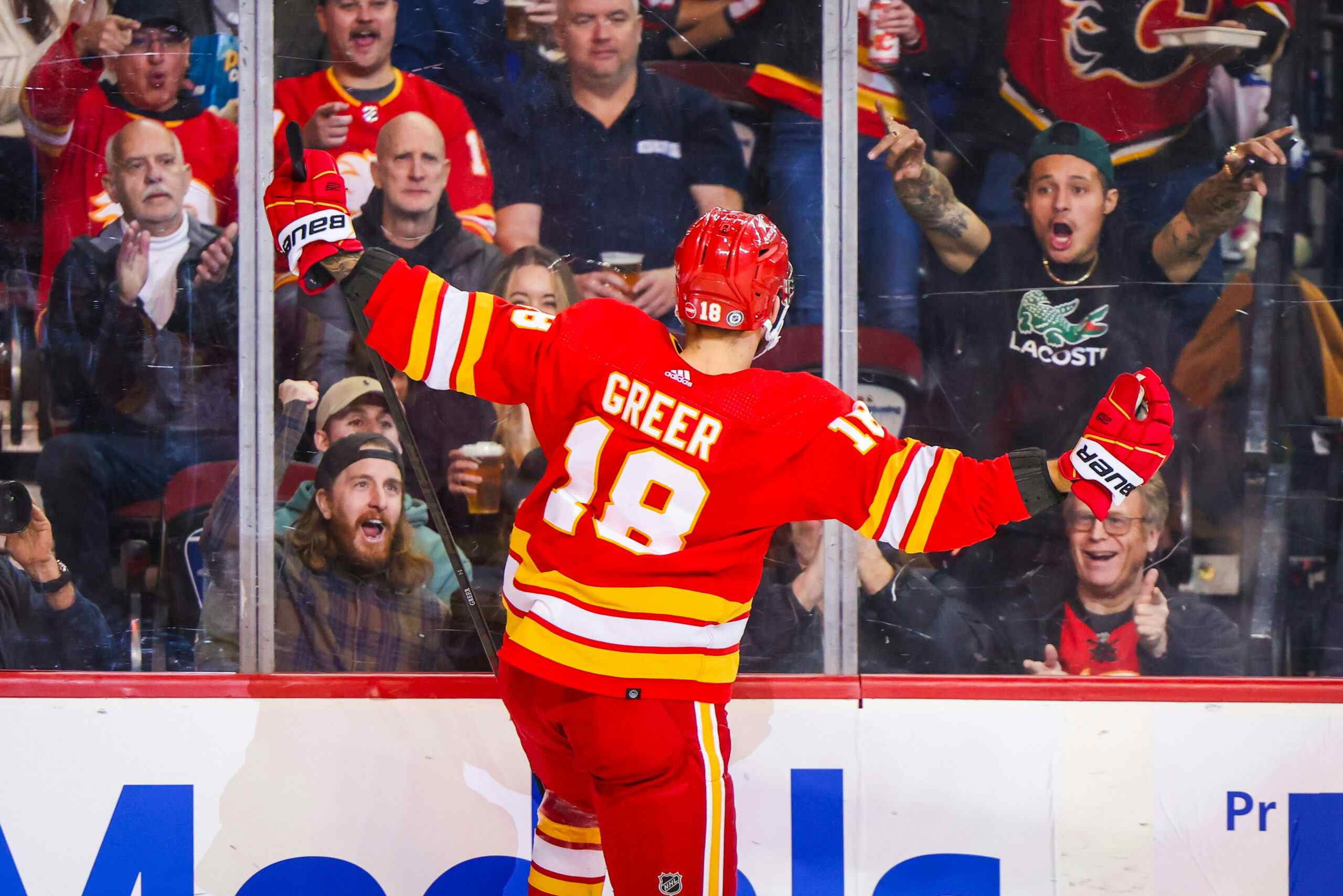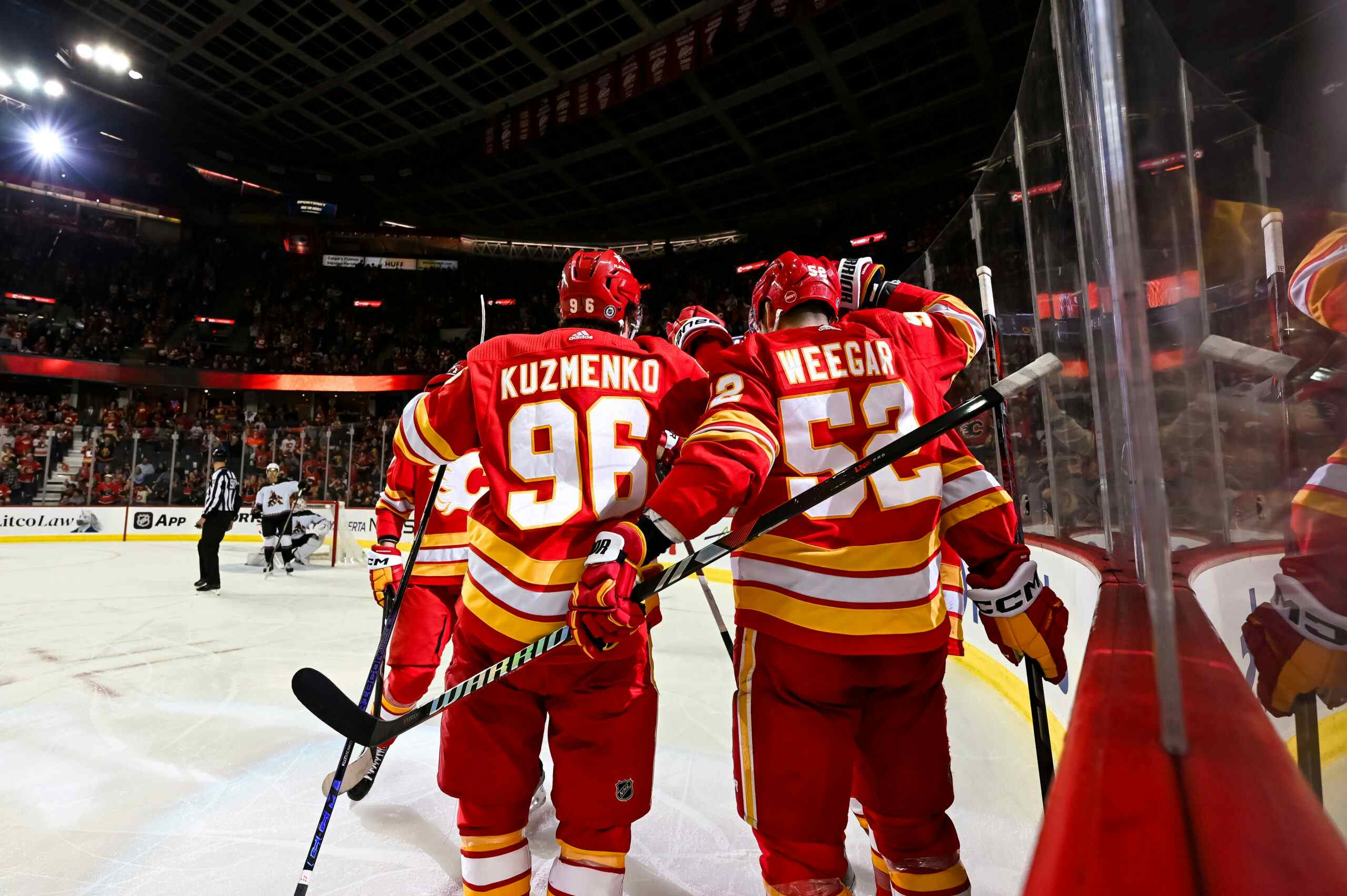FlamesNation Mailbag – Is the Flames’ roster set?
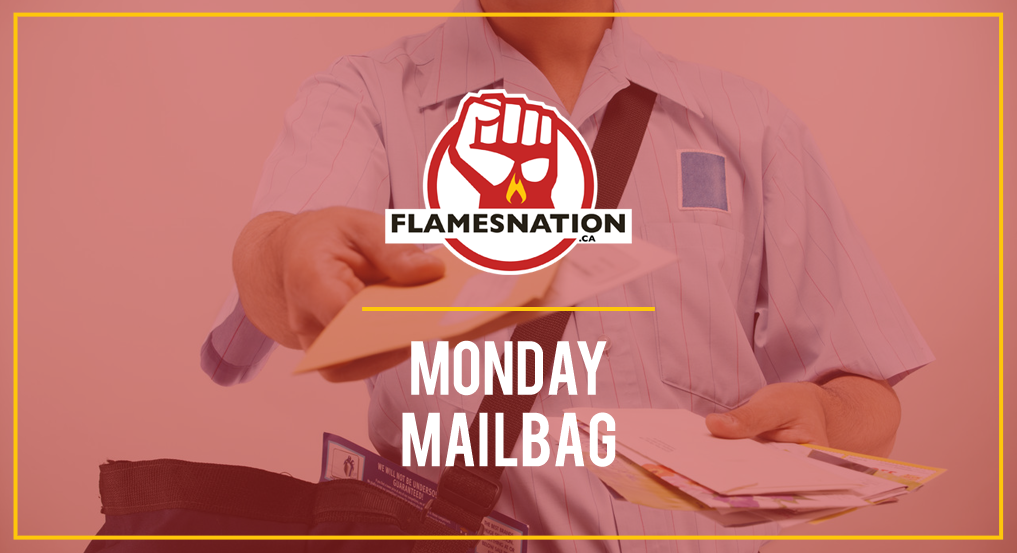
So the Penticton Young Stars Classic, which wraps up in about five or six hours, has been fun.
But it’s still just a stepping stone towards camp and the real preseason. We’re just a week away from the traditional split-squad games with Edmonton, where the real judgements and real hard decisions will start to come down.
So in this week’s mailbag, we look at who could be in, who could be out, who could be invited, and just where the Flames are as they gear up towards the NHL season.
Lightning round! I like it.
- Yes it is. It’s a pre-preseason tournament where about 25% of the rosters are tryouts or scrubs. Just guessing, but 70% of those involved will never play in an NHL game and 85% won’t make it to 100 NHL games. The players are fresh off their summers, having not played an actual hockey game in four or five months, and are thrown into a real game situation with little to no practice. The Flames’ roster has a combined 26 minutes of NHL experience. There’s no meaning you can contrive from it because the conditions the tournament exist in makes meaning impossible.Making any conclusions about a player’s immediate NHL future based on them playing non-NHL players in a very, very non-NHL setting is navel gazing. The only outcomes you should hope for is that everyone has fun and no one gets hurt.
- We can only beat the Jagr drum enough times, but the roster looks fine as it is. Jagr would be a nice boost, but I feel the Flames are content to see if their young guys can fix holes in the bottom six and then hit the UFA/trade market if they can’t.
- I don’t know but I’m gonna guess he did go to the gym and I would assume he got stronger because of it. Strength/fitness narratives are optimistic offseason content pieces and it remains to be seen if it really creates a quantifiable on-ice impact. Everyone goes to the gym and gets stronger in the offseason (“best shape of his life” is usually thrown around a lot, especially for players who had bad seasons). I don’t put much value into it.
- All around improvement on defence, some solid growth in the forward corps, so absolutely.
For the short term health of the club, they might want to look for a veteran. Putting a prospect in that spot is replacing a question mark with a question mark. If you can add a reliable 40-50 point guy, go for it immediately. There’s not going to be anyone on the farm who will realistically step up and do that for you.
For long term health, let a prospect step up. Thanks to remaining one of the healthiest teams last season, we never really got a good look at any of the prospects, and it’s probably a wise time to do that given that there is a swath of contracts expiring next year at both the AHL and NHL level. The team is probably going to take stock, see what they need, and then see who can be the solution.
PTOs are a tricky game to play. You’re looking for a guy with enough skill to earn a contract but not enough leverage to force a team to the negotiating table before coming to camp. Most of them are players who are old and still UFAs as of right now, so that’s who we will look at.
The list of available players is pretty grim, but a pretty good option would be Daniel Winnik.
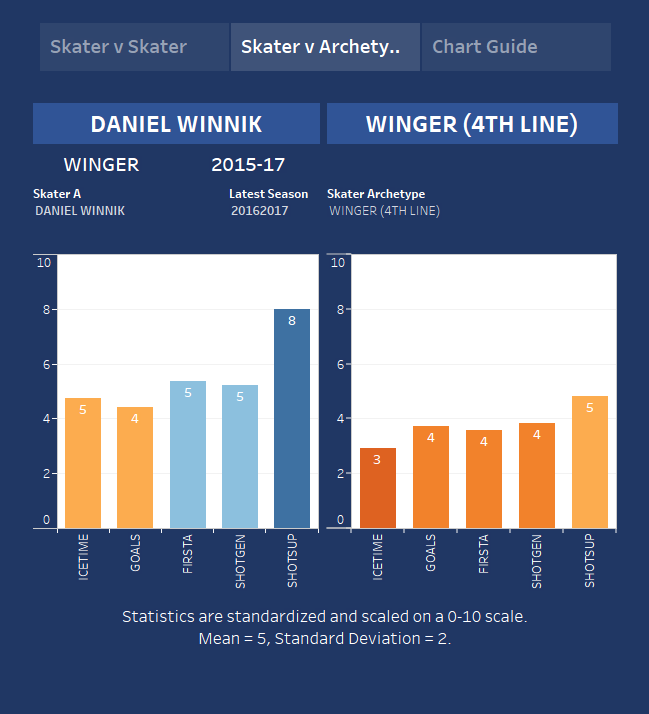
Winnik has had some strong results over the past few years, and could be a useful defensive option in the bottom six if the Flames have interest.
But, if you look above, there’s probably not much need to add a guy like Winnik unless he’s a strong producer. I’d like to see him at camp just to see if he can hang in the rotation (much better than Tanner Glass), but a prospect could probably take his spot just as easily.
Valimaki in the sixth spot? Sure, why not. Let’s have some fun. The kid is really good and it would be an interesting way to start the season. I enjoy the possibility of the Flames drafting a better defencemen than the Canucks did a year ago with a better pick. I’d like that a lot.
A legit shot though? No, not really. The team can get two free years of development from Valimaki, and they’ll probably take that instead of burning a cheap year as the team enters its contender window. Even if he’s capable in that sixth spot, so are Brett Kulak and Tyler Wotherspoon, and they’re cheaper and more experienced. Valimaki in the top six is an intriguing idea, but not feasible for 2017-18.
There’s a chance, yes.
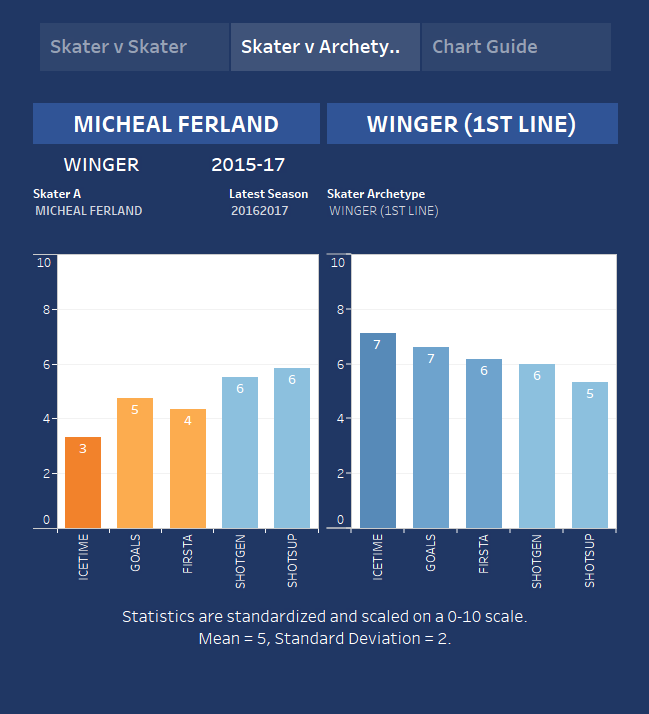
By the HERO chart’s standards, Ferland should certainly hang court with the first line. He’s had sneaky good possession metrics in less than ideal situations before Gulutzan tried him on the first line. Ideally, goals and first assists go up as Ferland gets more ice time and he shoots a bit more than he already does. There might be the chance that seeing more ice time and better players might bring those shot metrics down, but in the short time he was on that top line, it was a very strong line.
Now, is it a long term solution? Probably not. Let’s look at a bonafide first line winger, like Tyler Toffoli.
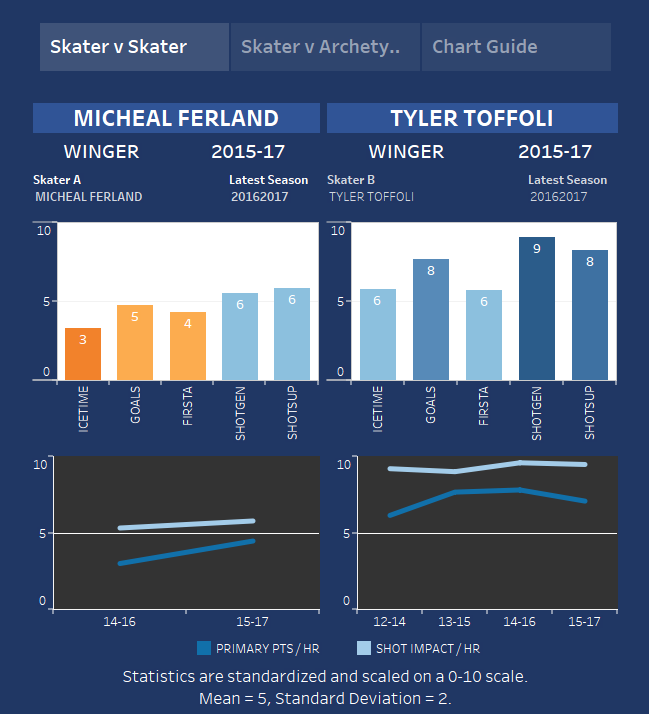
Toffoli is the type of player the Flames should be looking for to truly repair their RW depth. He’s dominant, no matter which way you cut it. 13-23-79 is a good line, but 13-23-77 would be a downright scary line. It’s a hard get, and a task for a later time, but certainly doable if the right opportunity presents itself (though it would be nice if Ferland could grow to that level).
For the mean time, Ferland should be able to hang in that role, but the Flames can really do better than him.
Here a few studies on how regression, on average, affects forwards: on corsi, on scoring, and on goals above replacement (GAR).
All different measures of success, but there’s a few general conclusions: a forward will generally get slightly worse past their prime ages (somewhere around 24 and 26), but after 30, they’re generally going to drop fast and drop quick.
Backlund peaked later than average, perhaps as a result of being miscast his first few years, and his best two years have been his most recent ones. Given what we know about regression, we can safely say that Backlund is likely just about to exit his prime, if he hasn’t already. He’s not going to be terrible next year, but perhaps not as impressive. Of course, he could surprise us all and do even better. Perhaps Matthew Tkachuk growing could prop Backlund up for another season or two. It’s not necessarily fate, but the odds are against it.
This is an important thing to look at given his looming contract extension. Who knows how negotiations are going, but it’s probably in the Flames’ best interest to cap a potential extension at four years maximum. Backlund would be 32 at the end of that contract, where his performance might be around bottom six centre levels. That’s probably when it’s time to say goodbye. We may be ready at that time.
Given that we said “they aren’t going to actually play Grossmann,” I’m going to enter this topic with some tepidity, but I think this is an overrated concern. Glass is a PTO warm body, and Gazdic is farm fodder. The Flames will probably not see them in NHL jerseys past September.
Bartkowski is a potential “bad” that I can live with. His usefulness has expired given that the expansion draft is now over, so there’s a heavy chance they shutter him down to the farm, especially with Kulak and Wotherspoon under contract and Andersson and Kylington in waiting. He might be an injury call up for “experience” reasons, but I wouldn’t put his NHL GP above five.
One bad left off this list is Garnet Hathaway, who has an NHL number now and could potentially hold a spot on the opening 23 man roster. He’s a lateral move on Lance Bouma at best, and could probably see some significant time. Hopefully another prospect steps up and takes away the #1 forward call-up title from him, because Hathaway in the lineup is not ideal.
Recent articles from christian tiberi


